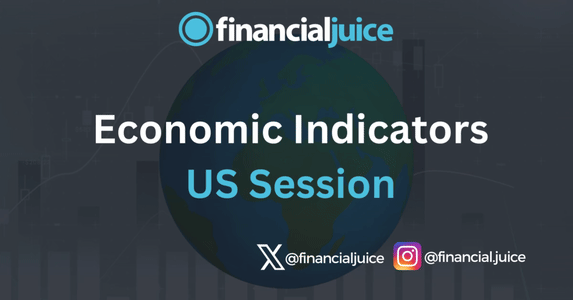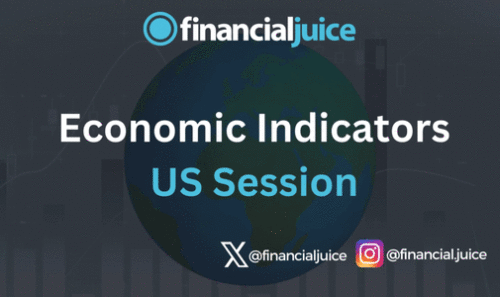
Week Ahead: Economic Indicators (US)
Hey, Traders!
For the June 10th week, here is a list of all of the major economic indicators being released during the US Session, with a brief synopsis of what they represent and what to possibly expect from the markets in reaction.
Wednesday 12th June
08:30 ET
US CPI for May
The US Consumer Price Index gauges the average change in prices paid by consumers for a basket of goods and services over time.
Calculated monthly by the US Bureau of Labor Statistics, the CPI reflects fluctuations in the cost of items such as food, housing, healthcare, and transportation.
Presented as a percentage change relative to a predetermined base period, the CPI serves as a measure of inflation.
What to Expect
If inflation comes in hotter (higher) than expected, you will most likely see dollar strength and US stocks weaken, as this signals that the Fed’s fight with inflation is going to require a more hawkish stance, with the potential for a higher for longer US interest rate.
10:30 ET
US Weekly EIA Crude Oil Inventories
The US Weekly Energy Information Administration Crude Oil Inventories report provides data on the change in the number of barrels of crude oil held in inventory by commercial firms in the United States over the past week.
This data is monitored offers insights into the supply and demand dynamics of the oil market.
What to Expect
A larger-than-expected increase in inventories may indicate oversupply and downward pressure on oil prices, while a larger-than-expected decrease may suggest strong demand or production disruptions, potentially leading to upward pressure on prices.
14:00 ET
US Interest Rate Decision
The US Interest Rate Decision refers to the determinations made by the Federal Reserve, specifically the Federal Open Market Committee (FOMC), regarding the federal funds rate.
The federal funds rate is a key benchmark interest rate influencing short-term borrowing costs throughout the economy.
The FOMC conducts regular meetings to assess economic conditions and adjust monetary policy accordingly. Changes in the interest rate have broad implications, impacting borrowing costs for businesses, consumers, and financial institutions.
A higher rate is often used to cool off an overheating economy, while a lower rate is employed to stimulate economic activity during periods of sluggish growth or recession.
What to Expect
Markets generally expect no change at this rate decision, however, the vocabulary used in the rate statement and press conference often causes the biggest moves as traders hang on to every word for forward guidance on the future direction of or what sectors need to cool off more to help inflation head towards 2%.
More hawkish remarks (implying higher-for-longer rates) can lead to Dollar strength and stocks weakening.
Thursday 13th June
08:30 ET
US PPI for May
The US Producer Price Index measures the average change over time in the selling prices received by domestic producers for their output.
It is published monthly by the Bureau of Labor Statistics and is a key indicator of inflation at the wholesale level.
The PPI covers a range of industries, including manufacturing, agriculture, and mining, and helps economists and policymakers gauge inflationary pressures before they reach the consumer level.
A rising PPI indicates increasing prices for producers, which can lead to higher consumer prices, while a declining PPI suggests decreasing producer prices.
What to Expect
Market participants see this as a leading indicator for CPI/PCE inflation reads, meaning they react to it in a similar way as those reports.
Higher inflation feeds into the ‘higher for longer’ narrative, which could push back bets on Fed rate cuts this year, causing potential weakness in US stocks and strength in the dollar.
If PPI were to come in lower than expected, the opposite would be true.
Friday 14th June
10:00 ET
University of Michigan Sentiment June Prelim
The University of Michigan Sentiment Index measures consumer confidence in the United States.
It is based on a monthly survey that assesses consumers’ attitudes about the economy, including their expectations for personal finances, business conditions, and overall economic outlook.
This index is closely watched as an indicator of consumer spending and economic health.
Higher readings suggest increased consumer confidence, while lower readings indicate reduced confidence.
What to Expect
Higher consumer confidence can be seen as an upside risk to inflation, as it indicates increased US spending power, and also as a counter to recession fears, depending on the current economic environment.
Having said that, the markets have not reacted to the sentiment number itself for the last few months, but rather the 1 and 5-year inflation expectations released with it.
If the consumer inflation expectations are higher than expected, this could cause markets to push back their bets on Fed rate cuts this year, which could cause strength in the dollar and weakness in US stocks.
The opposite is also true if the inflation expectations come in lower than expected.



